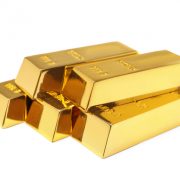Jim Hitt Gives his Expert Opinion on the Frequently Asked Questions About Silver Investments
In a December 2011 report, Money Morning reports that ‘Right now, silver prices are on a major tear. They could even break as high as $250 by the end of the year.’ Today Jim Hitt, CEO of American IRA, is responding to a question that is growing in popularity–should people invest in silver?
In a December 2011 report, Money Morning reports that ‘Right now, silver prices are on a major tear. They could even break as high as $250 by the end of the year.’ Today Jim Hitt, CEO of American IRA, is responding to a question that is growing in popularity–should people invest in silver? The decision as to whether to invest in silver and gold is as personal a decision as whether one prefers to wear silver or gold. The answer will vary depending on that persons personal preference.
Silver IRA
Jim Hitt says “These days, it seems like every other ad they hear on talk radio is pitching gold. It’s true that gold has historically been an important store of value, a unit of exchange, and the commodity that traditionally undergirds currencies. But gold is not the only commodity with those properties.
According to Money Morning, ‘Right now, silver prices are on a major tear. They could even break as high as $250 by the end of the year. By 2015, it’s estimated that global industrial demand for silver – largely driven by India and China – will increase 36%, from 487 million ounces in 2010, to 666 million ounces.’
Consider silver. Like gold, silver also has beauty and scarcity – so much so that it, too, has been used as the standard unit of measurement of value underlying the currencies of nations and empires for centuries. In fact, the silver standard was commonplace in Europe and Asia from the fall of the Byzantine Empire through the 19th century. In the 1795, the United States adopted a de facto silver-based monetary system – derived from the Spanish Milled Dollar, or so-called “pieces of eight,” and maintained it, more or less, until 1875. However, Congress took the economy off the gold standard during the Great Depression, and placed the country back on the silver standard, and allowed the U.S. Treasury to expand the monetary supply independently of the Federal Reserve by issuing money against silver held in the U.S. Treasury’s vaults. The Treasury continued to redeem notes in silver on demand until 1968.
Why Silver?
Although silver is closely correlated to gold, in that it tends to do well during times of economic uncertainty. However, silver theoretically has less speculative demand associated with it. Consider: Any time they hear an asset class being hawked on the radio to mass market investors, there is frequently some speculative froth built in to the asset class. The money may be “hot,” and amateur investors are prone to dump holdings when the breaks don’t go their way.
This can create opportunities for savvy traders. But most long-term investors who don’t want to devote their days to trading may prefer a more boring, staid market. In today’s environment, silver may provide a way for investors to participate in the benefits of gold investing, but ‘below the radar,’ in an asset class less exposed to the ups and downs of popular sentiment.
More generally, while silver isn’t an income generator, it is in some ways an ideal IRA holding. It is liquid enough so they can sell when they need to, and volatile enough to be a long-term holding. It is an effective hedge against inflation and economic uncertainty, and it is unlikely ever to fall to zero. Silver is the most conductive metal on the periodic table – even more so than gold – and therefore has intrinsic value to industry in a variety of applications, which tends to support its price.
Silver’s price has historically floated around, relative to the price of gold, trading between 1/15th of the price of gold at the high end and 1/100th at the bottom. They can view the current prices of gold, silver, platinum and copper, as well as other commodities, here. Owning some silver may help provide some diversification benefit against fluctuations in the price of gold, while still providing the benefits of a precious metal allocation in their portfolio.
Using an IRA to Purchase Silver
They can use an IRA, and in some circumstances, a solo 401(k) plan or SEP IRA, to purchase silver. They can’t buy jewelry, though. Instead, they must hold silver bullion or select from a list of known and standardized silver coins.
They also can’t take possession of their IRA’s silver, or other precious metals, directly. If they do, they will trigger income tax liability on the entire amount – on top of early distribution penalties if they are under age 59 and a half.
Instead of taking direct possession, they must establish a special type of savings vehicle called a “self-directed IRA.”
With a self-directed IRA, they appoint an administrator to hold the silver – or any other non-prohibited asset – on their behalf.
Additionally, they must abide by certain rules restricting whom their IRA can do business with. In a nutshell, they cannot buy, sell, borrow or lend from their IRA, nor pledge it as collateral. Neither their immediate family, nor any of their ascendants or descendants, can buy, sell, lend to or borrow from their IRA. The same applies to any entities they control. Lastly, their accountant, financial advisor, attorney, or anyone else who advises they regarding their IRA may not transact with the IRA, nor may any entities they control.
Standard IRA Limitations Apply
Like all other IRA accounts, they can only contribute a maximum of $5,000 in new money per year ($6,000 for those over age 50) to all their IRAs combined, subject to certain income requirements (see IRS Publication 590 for details on contribution limitations to IRAs.) They can roll over an unlimited amount from other IRA accounts into a self-directed IRA. If they want a higher contribution limit, they may consider establishing a self-directed SEP IRA account or solo 401(k) plan.”





